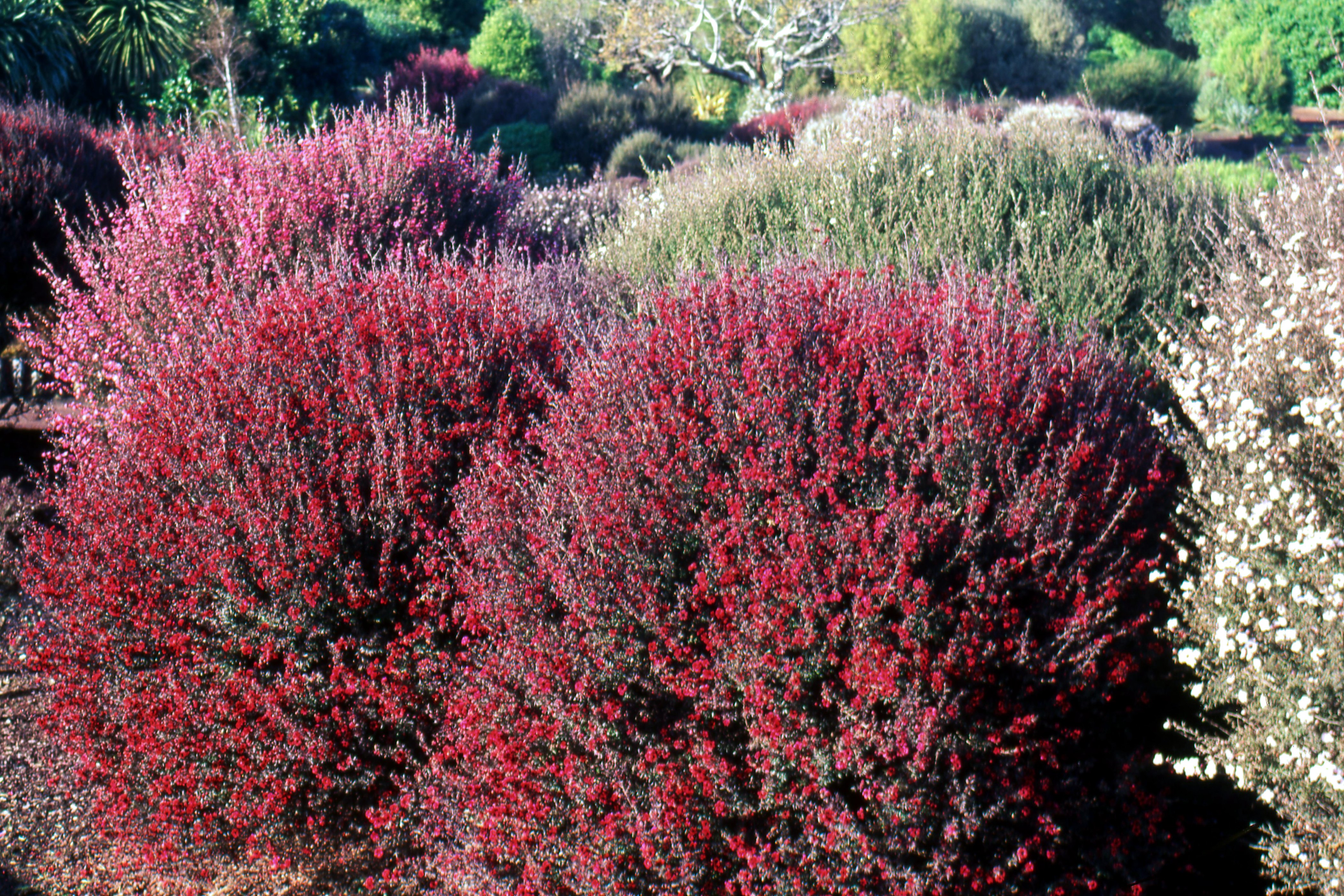Physical characteristics
A compact
Flowers and foliage
Double rose-
Preferred site
Manuka grow best in well-drained soil and sunny position. It is frost tolerant and grows well in exposed
Preparation for planting
Always choose healthy well-grown
T
A general purpose fertiliser can be added at planting time mixed in with surrounding soil and
Maintenance tips
Mulching
For lush growth trim back lightly after flowering to promote a bushy habit and prolong the life of the plant. For a natural shape use secateurs instead of hedge clippers. Take care not to prune back into very old wood as
The root-ball sometimes dries out despite the surrounding soil being moist; direct water down the plant stem to saturate the root-ball. The first summer and autumn after planting is critical for young
This plant can be propagated by cuttings only. The dwarf "Nanum Group" forms sometimes produce vigorous upright growths which should be pruned off.
Ecological and biodiversity benefits
Attracts a range of insect pollinators.
Pests and diseases
Sooty mould sometimes develops and can be controlled by using neem oil.
Location at Auckland Botanic Gardens
Native Plant Ideas
Interesting facts and tips
B


.jpg?width=1200&height=800&v=1d4024debce7320)

.jpg?width=1200&height=1200&v=1d4024dceb89e50)

.jpg?width=1200&height=1200&v=1d5569224d63650)
 .jpg?width=1200&height=1200&v=1d4024df6ce2770)
.jpg?width=1200&height=1200&v=1d55676a892f2b0)
 .jpg?width=1200&height=1200&v=1d4024e3b65f7f0)